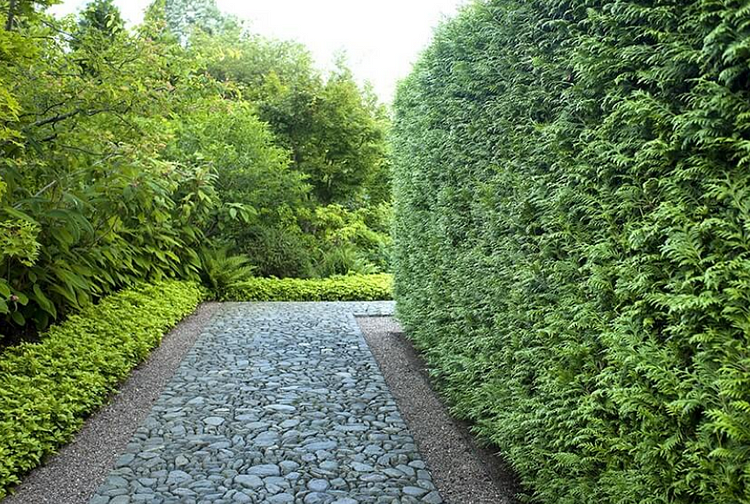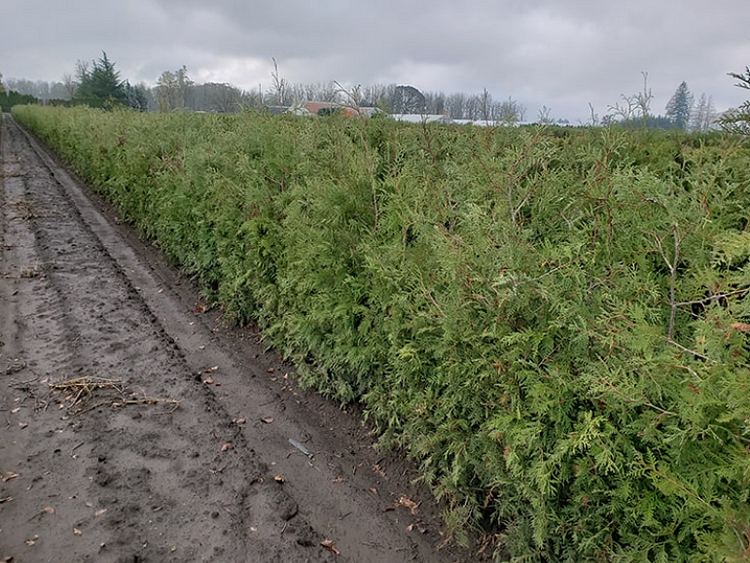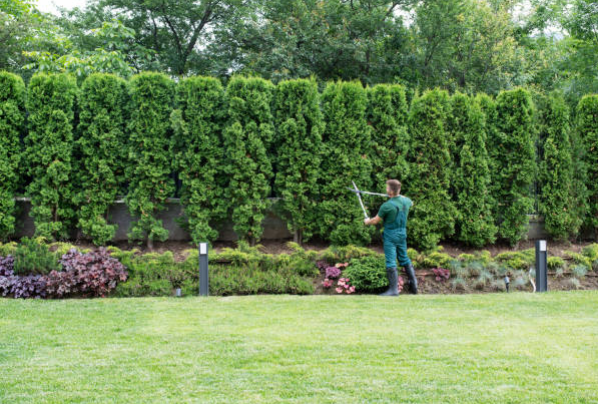Caring For Thuja Evergreens: How To Grow A Green Giant Arborvitae?
The Green Giant Arborvitae, scientifically known as Thuja standishii x plicata ‘Green Giant,’ is a majestic evergreen tree renowned for its towering height, dense foliage, and adaptability to various growing conditions.
As one of the fastest-growing evergreens, it’s a popular choice for creating privacy screens, windbreaks, and ornamental plantings. However, like any plant, proper care and attention are crucial to ensure its optimal growth and health.

In this comprehensive guide, we’ll explore everything you need to know about caring for Thuja Evergreens and growing a thriving Green Giant Arborvitae in your landscape.
Understanding Green Giant Arborvitae
Before delving into care tips, let’s familiarize ourselves with the characteristics of the Green Giant Arborvitae. This hybrid evergreen is a cross between Japanese Thuja (Thuja standishii) and Western Red Cedar (Thuja plicata), resulting in a robust tree with a conical form, soft foliage, and a rapid growth rate.
With the potential to reach heights of 30 to 60 feet and widths of 10 to 20 feet, Green Giant Arborvitae offers unparalleled versatility in landscape design.
Planting Green Giant Arborvitae

When selecting a location for your Green Giant Arborvitae, choose a site with well-draining soil and full to partial sunlight. Dig a hole that is twice as wide as the root ball and equal in depth.
Place the tree in the center of the hole and backfill with soil, gently tamping it down to remove air pockets. Water the newly planted tree thoroughly to settle the soil around the roots.
Watering and Moisture
Proper watering is essential, especially during the tree’s establishment period. Keep the soil consistently moist but not waterlogged, especially during hot and dry weather.
Deep watering is preferable to frequent shallow watering, as it encourages deep root growth and drought tolerance. Mulching around the base of the tree helps retain soil moisture and regulate temperature.
Pruning and Maintenance

Regular pruning helps maintain the shape, density, and overall health of Green Giant Arborvitae. Prune annually in late winter or early spring before new growth emerges.
Remove any dead, damaged, or diseased branches, as well as any crossing or overcrowded branches. Aim to maintain a pyramidal or conical form, with a slightly narrower top than base, to prevent snow and ice accumulation.
Fertilizing
While Green Giant Arborvitae is relatively low-maintenance, it can benefit from occasional fertilization to promote healthy growth. Apply a balanced, slow-release fertilizer in early spring, following the manufacturer’s instructions for application rates and methods. Avoid fertilizing in late summer or fall, as this can stimulate late-season growth that may be susceptible to winter damage.
Pest and Disease Management
Green Giant Arborvitae is generally resistant to most pests and diseases, but it may occasionally encounter issues such as spider mites, bagworms, or fungal diseases like canker and blight.
Monitor the tree regularly for signs of pests or diseases, such as discolored foliage, webbing, or unusual growth patterns. If detected, promptly treat the affected tree with appropriate measures, such as pruning, insecticides, or fungicides.
Conclusion
With its impressive stature, lush foliage, and easy-care nature, the Green Giant Arborvitae is an excellent choice for adding vertical interest and privacy to your landscape.
By following these care guidelines, you can cultivate a thriving and resilient tree that will be a source of beauty and enjoyment for years to come.
Whether used as a standalone specimen, a windbreak, or a privacy screen, Green Giant Arborvitae is sure to make a lasting impression in any garden or landscape setting.
Buy Green Giant Arborvitae for sale now from InstantHedge.
